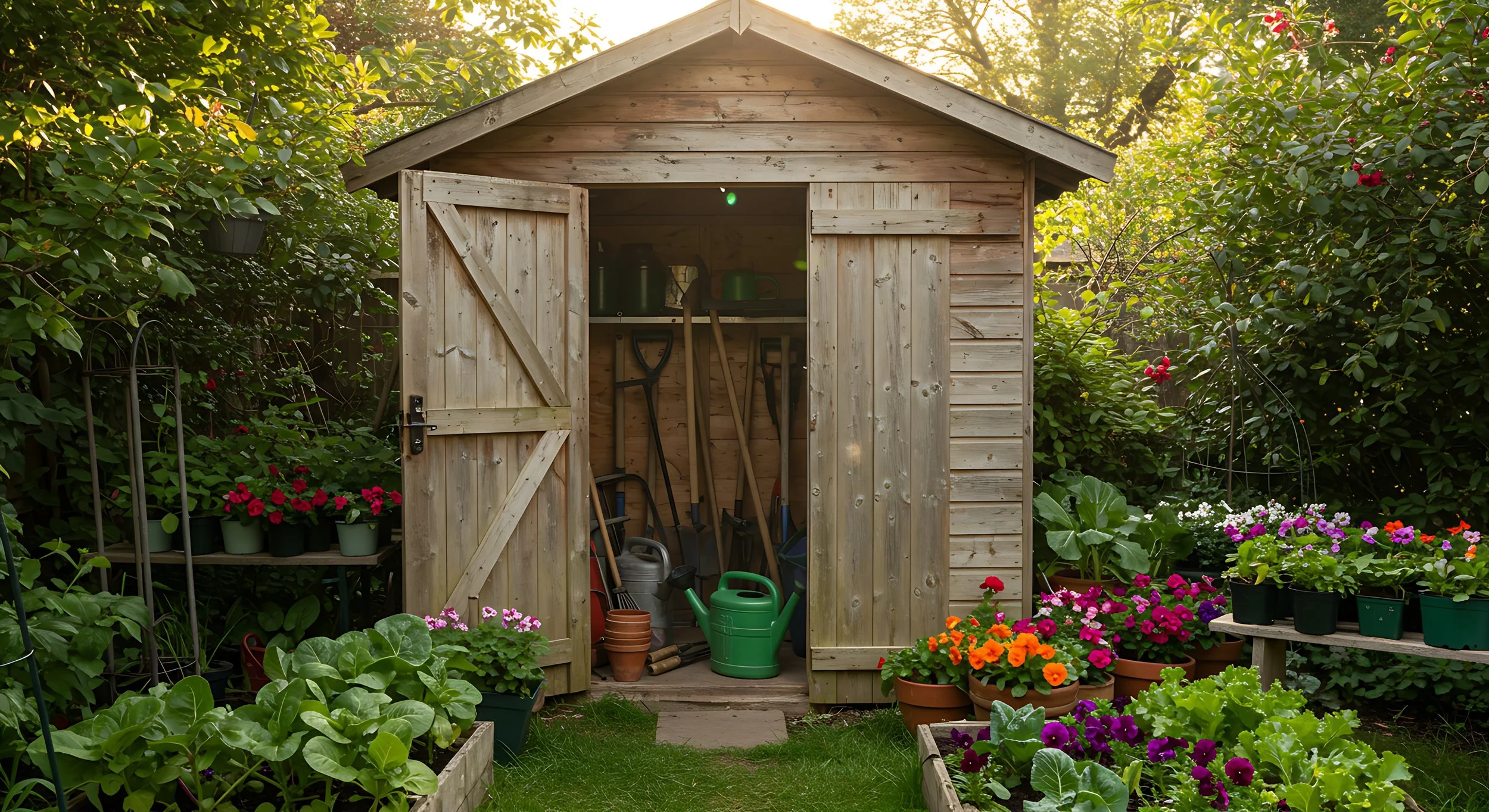The Essex Couple Heating Their Home With a Data Centre in a Garden Shed
In a quiet corner of Essex, inside a modest garden shed behind a two-bed bungalow, a small technological experiment is quietly rewriting the future of home heating. Terrence and Lesley Bridges, aged 76 and 75, have become the first people in the UK to test a new heating system that uses a miniature data centre to keep their home warm,dramatically cutting their energy bills in the process.
Their monthly costs have plunged from about £375 to as little as £40, simply by replacing their gas boiler with a “HeatHub,” a compact server stack containing more than 500 small computers. These machines aren’t simply whirring away for the sake of heating; they’re performing real digital workloads. And the heat they generate, a waste product in most data centres—is captured, stored, and circulated through the Bridges’ hot water and central heating system.
For a couple who rely heavily on consistent warmth, the impact has been life changing.
A Warm Home, A Healthier Life
Terrence and Lesley have lived in their home near Braintree for three years. Lesley suffers from spinal stenosis, a condition that leaves her in significant pain when the temperature drops. For them, a reliably warm home isn't a luxury, t’s essential.
“You don’t need to go to a sauna after coming here,” Lesley jokes, seated comfortably in her armchair. Terrence, a retired RAF sergeant, is equally enthusiastic.
“It truly is brilliant. I’m over the moon we got picked to trial this. You can’t fault the heating system, it's a 100% improvement on what we had before.”
Despite keeping the heating at what he calls “fairly high,” his bill now rarely exceeds £60 per month.
How a Garden Shed Becomes a Powerhouse
At first glance, the Bridges’ shed looks ordinary—cream brick walls, a small window, and garden ornaments nearby. Inside, however, is a glimpse of a low-carbon future.
The HeatHub, developed by UK startup Thermify, sits alongside solar inverters, a battery storage unit, and a heat battery. The unit isn’t designed for compute-intensive tasks like training artificial intelligence models. Instead, it handles everyday digital processing, running apps, analysing data, and supporting business operations. Each module contains up to 56 Raspberry Pi computers, each about the size of a matchbox.
As these devices process data, they release heat, which is captured by oil and transferred into the household heating system. Thermify’s long-term vision is to create a distributed, remote-managed data centre, with units like the Bridges’ forming part of a wider, cloud-connected network.
Crucially, the model is designed around cost-sharing. Clients will pay Thermify to process their data, effectively covering the electricity costs required to produce the heat.
“The electricity that’s generating that heat is paid for by somebody else,” explains CEO Travis Theune. “That allows us to provide clean, green heat at a low-to-no price point.”
Part of a Bigger Mission: Decarbonising Heat for Low-Income Households
The installation forms part of SHIELD, an innovation project led by UK Power Networks aiming to help low-income households transition to net zero without taking on additional financial burden. As part of SHIELD, the Bridges also received solar panels and a home battery, further amplifying their savings.
Daniel Greenwood, head of asset management at Eastlight Community Homes (the Bridges’ landlord), says the early results have been “fantastic.”
“Although this is the first of its kind, we’re looking to roll it out much more broadly. The next phase aims to install 50 HeatHubs in 50 homes.”
For UK Power Networks, the project represents an attempt to ensure that the transition to green energy is inclusive, not exclusive.
“We don’t want anyone left behind as the UK moves towards a greener future," says Jack McKellar, innovation programme manager.
Why Data Centre Heat Matters
Globally, data centres consume enormous energy—and a significant portion of that is spent on cooling. In the UK alone, data centres use around 2.5% of national electricity, a figure expected to quadruple by 2030.
The push to harness waste heat is gathering momentum:
A Devon swimming pool is warmed by a washing-machine-sized “digital boiler”.
Plans are underway for the Melbourn Energy Superloop, a solar-powered data centre tied to a district heat network in Cambridgeshire.
Milton Keynes University Hospital is exploring a £95m proposal to reuse data-centre heat.
Even Microsoft has experimented with underwater data centres to improve heat management.
The Bridges’ experiment is tiny in comparison, but it taps into the same principle: turning digital waste heat into free, clean energy.
Nature-Powered Cooling: Another Green Data Centre Approach
The article also highlights a different innovation landscape: using natural water bodies to cool data centres.
At a former RAF base near Peterborough, Mike Richardso, founder of DSM, runs a boutique 400kW data centre cooled by a 500-cubic-metre artificial lake. Solar panels provide power, and koi carp help keep algae from clogging the pipes.
Water circulates between the servers and submerged heat exchangers using a closed-loop system. Because no chemical coolants or energy-intensive compressors are required, this approach slashes cooling electricity demand.
“It works—most definitely,” Richardson says, though he admits that relying on nature comes with variability and requires careful management.
The principle, however, is scalable. With a larger lake, the cooling capacity grows. Water remains one of the best mediums for heat transfer.
A Glimpse of the Home Heating Future?
What’s happening in the Bridges’ garden shed may seem niche, even quirky, but the implications are significant.
If distributed “micro data centres” can offset heating costs for households while simultaneously serving digital infrastructure needs, they could become a compelling part of the UK’s energy strategy. The model:
Reduces household energy bills
Cuts carbon emissions
Reuses waste heat
Supports local renewables
Helps build resilient digital infrastructure
It’s an elegant example of systems thinking: solving two problems, digital demand and heating, at once.
For Terrence and Lesley, though, the impact is simple and immediate.
“It’s eco-friendly, it’s warm, it’s affordable,” Terrence says. “You can’t ask for much more.”
What began as an experiment in a garden shed may yet spark a quiet revolution in how Britain heats its homes.
Thinking of Becoming a Qualified Electrician?
At OPTIMA, we provide comprehensive electrical training courses that equip you with the skills, qualifications, and confidence to work safely and legally in this vital industry. Whether you’re just starting out or looking to expand your qualifications, our accredited training programmes will give you the knowledge, confidence, and credentials to meet new building standards and market demand.
By enrolling with OPTIMA, you’ll:
✅ Gain industry-recognised qualifications trusted by employers. ✅ Hands-on practical training
✅ Train in a supportive, career-focused environment with real progression routes.✅ Expert instructors with real-world experience
✅ Access our ‘Pathway to Placement’ support to help you move from the classroom into paid work.
✅ Be part of a trade that’s essential, future-proof, and in constant demand.
Contact us today to embark on your training journey.
Contact us: Request Information
Email: info@optima-ect.com
Freephone +44 800 0371572


